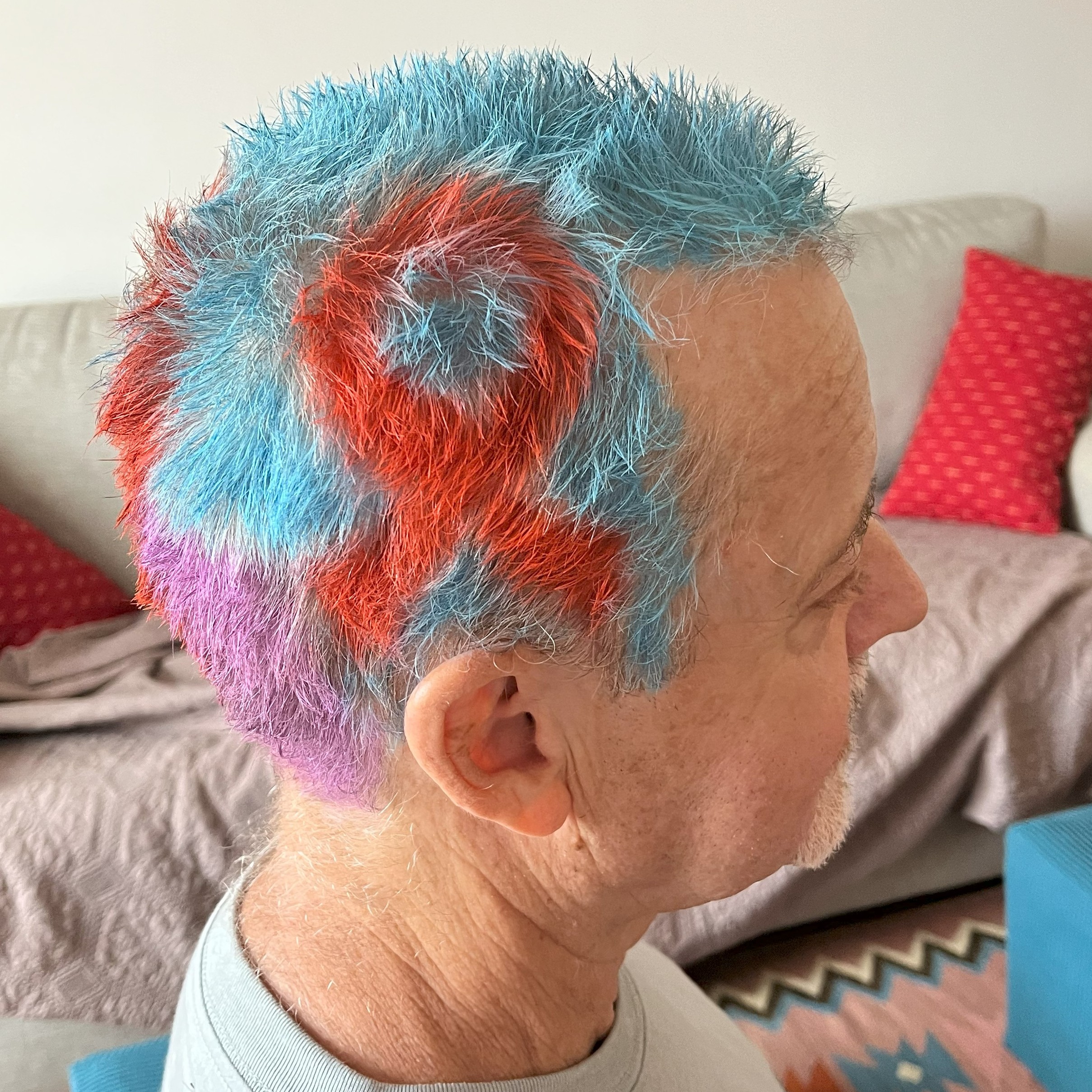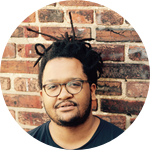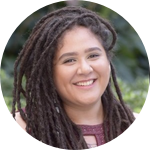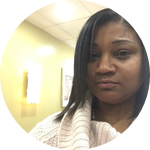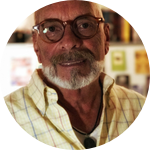Project Results
We exceeded our goal of interviewing 300 opiate users and we learned much about the problems that drug users face (frequency charts showing preliminary findings are included in our report). Nearly 50 students participated in the study and many of them hope to contribute again when we replicate the Fanteca study in the spring of 2018.
About This Project
To address overdoses in NYC, it is important to know how many people are at risk, how many have had non-fatal overdoses in the recent past, and to identify what characteristics they share. Our student research team will recruit and interview 300 opiate users over 6 successive weekends at a fixed location in the South Bronx in the Fall of 2017. It will also educate and train undergraduate students as future professionals in the fields of public health, public policy, and criminal justice.
Ask the Scientists
Join The DiscussionWhat is the context of this research?
Our failure to address the opiate crisis can be seen in the increasing number of overdose deaths that occur each year. In New York City, there were 1,374 overdose deaths in 2016, the 6th year of increasing numbers, and 400+ more deaths than in 2015. The largest number of overdose deaths from opiates in 2016 occurred in the South Bronx and is said to be largely the result of the introduction of fentanyl, a powerful synthetic opiate, to the supply of street heroin.
In August 2017, our team of student researchers systematically recruited 226 opiate users in the South Bronx to ask them about their experiences. The findings were instructive: 70% were male, more than half were injectors, and there were a total of 184 overdoses among them; six people had overdosed more than 5 times each.
What is the significance of this project?
There are no proven solutions to the opiate crisis that has gripped the United States over the last several years. One problem is that nobody has a very good idea about how many people are at-risk for overdose or what distinctive characteristics people who use drugs share. Providing timely and important information, the project will also educate and train hundreds of students to be the badly-needed next generation of professionals in several fields, including public health, public policy, and in criminal justice. The project has already had a profound impact on student researchers, providing them with practical tools and knowledge, and sensitizing them to the fact that the opiate problem involves human beings and not “drug users”
What are the goals of the project?
The goals are:
1) To recruit and interview 300 opiate users over 6 successive weekends at a fixed location in the South Bronx in the Fall of 2017.
2) Estimate the number of opiate users in the South Bronx and describe the characteristics they share using a method of recruiting people called Respondent Driven Sampling.
3) To train the next generation of experts who will address the problem, undergraduate students who are largely drawn from the same neighborhoods where the study will take place are afforded the opportunity and support to learn about the problem. Armed with first-hand data they collect, they are at the cutting edge of fashioning data-driven responses to the problems.
Budget
To recruit subjects, this project uses Respondent Driven Sampling (RDS) methods. Essentially, we pay each respondent $10 for completing a short interview, and then pay them $5 for each of three eligible friends they recruit into the study. We use software that keeps track of numbered coupons that subjects give to their friends, and typically, large numbers of people arrive to participate in the study. Our pilot study in August 2017, for example, interviewed between 30-50 subjects in a little more than 2 hours each day of fieldwork.
Our pilot project interviewed 232 people in August 2017 and spent $3,280 on interview and recruitment fees. We anticipate that reaching our goal of 300 interviews will cost about $4,400.
The project needs to have harm reduction supplies, including "overdose kits" containing the drug Naloxone, available for emergency situations and for participants to take with them when they leave. These will include, eg, sterile injection equipment, antiseptic and bandages.
Endorsed by
 Project Timeline
Project Timeline
Student researchers from the various classes will be trained at the beginning of the fall 2017 semester. Data collection will begin in the Bronx at the beginning of October and will take place over 3 consecutive weekends (6 days total). Data cleaning and analysis will take place in November 2017. Findings from the analysis of the data will be posted online by the end of December 2017.
Sep 21, 2017
Project Launched
Sep 29, 2017
Train undergraduate students to interview opiate users the first month of the fall semester
Oct 14, 2017
Begin to recruit and interview 300 opiate users in the South Bronx
Nov 19, 2017
End data collection
Nov 20, 2017
Begin data cleaning and analysis
Meet the Team
Affiliates
Affiliates
Affiliates
Affiliates
Affiliates
Affiliates
Affiliates
Affiliates
Affiliates
Affiliates
Team Bio
Our team of researchers includes professors at John Jay College and other City University of New York (CUNY) colleges who offer classes about drugs through the Anthropology and Sociology Departments. The students enrolled in the classes will collect the data for our project each semester.
Ric Curtis
I've been a professor at John Jay College since the late 1980s. A former Chairman of the Anthropology Department, the Sociology Department, and the Department of Law, Police Science & Criminal Justice Administration, I also have a track record of working with drug users and sex workers. I am a founder and/or Board member of 4 non-profit "harm reduction" organizations in the NYC area, including Boom Health, Inc. in the Bronx, the After Hours Project, Inc. and Family Services Network of NY, Inc. in Brooklyn, and Community Action for Social Justice, Inc. in Long Island. Over the last few years, I've worked closely with St. Ann's Corner of Harm Reduction, Inc. in the South Bronx.
Leonardo A. Dominguez Gomez
Leo Dominguez is a Research Analyst at the ISPH and Adjunct Lecturer at John Jay College of Criminal Justice. He is a trained Epidemiologist, his expertise includes survey design, statistical modeling, data management, and ethnography. Additionally, he has prior experience in recruiting hard to reach populations using respondent driven sampling in both urban and rural settings with heroin users. His subject matter expertise is in HIV, HCV, Substance use, and Harm reduction.
Sheng Li
Sheng Li is an Assistant Professor of Biostatistics, Epidemiology and Systems Science, and a member of The Center for Prevention by Systems and Community Design at CUNY SPHHP. He’s trained in Medicine, Epidemiology and Complex Systems Science from the Center for The Study of System Science (CSCS) and School of Public Health in the University of Michigan at Ann Arbor.
Sheng’s research has focused on quantitative analysis and systems modeling for both infectious diseases and non-communicable diseases including influenza, measles, rubella, HIV, PTSD and Childhood Obesity.
camila gelpi-acosta
Camila Gelpi-Acosta has an extensive history of research, service, and activism with drug users. Through her many contacts with harm reduction programs in NYC and Puerto Rico, her ongoing ethnographic work with Puerto Rican opiate users in the South Bronx helps keep the Fanteca Project focused on the important issues facing users today.
Douglas Goldsmith
I've been a professor in the Department of Anthropology at John Jay College for more than 20 years and have taught classes in drug use and abuse for most of that time. As an ethnographer with Narcotic and Drug Research, Inc. (NDRI) in the 1980s and 1990s, I conducted research on drug users, dealers and markets for a variety of research projects. At John Jay, our long-term project called "Drugs in My Neighborhood" has produced an enormous data set about that tracks the transformation of NYC area neighborhoods with regard to drugs and crime. The Fanteca Project is yet another opportunity for students to learn about the impact that drugs have on their neighbors and their neighborhoods.
Anjelica Maria Camacho
Anjelica-Maria Camacho is a Research Corrdinator at the Research and Evaluation Center at John Jay College. Her previous work included projects on youth justice, drugs, gun-violence, and the intersection of crime and race. Anjelica graduated from John Jay with a Masters in Criminal Justice with dual concentrations in criminology & deviance and terrorism studies. She currently teaches Sex and Culture and Drug use and Abuse in the Anthropology Department at John Jay College.
Rob Freeman
Rob Freeman is a qualitative research consultant for New York University’s Center for Drug Use and HIV Research, and an Adjunct Lecturer for John Jay College. Trained as a cultural and medical anthropologist, his research focuses on the sociocultural dimensions of HIV/AIDS, including issues such as substance use, structural inequalities, and gender and sexuality. He is currently teaching Drug Use and Abuse 110 and Death and Dying 224.
Popy Begum
Popy Begum is an Adjunct Lecturer at John Jay College, where she teaches international criminal justice, criminology, and research methodology courses. Previously, she has worked on Rikers Island and created individual discharge plans for incarcerated male and female, youth and adults who are at a high risk of reoffending, and counseled them about re-entry, including substance abuse issues. Popy earned a B.A. in international criminal justice from John Jay College, and an MSc in criminology and criminal justice research methods from Oxford University. Currently, she is a PhD Student at the School of Criminal Justice, Rutgers University and is generally interested in the intersection of race, gender, class and crime.
Tabrina Youmans
Tabrina Youmans is a students at John Jay College who participated in the Fanteca Pilot Project over the summer of 2017. As a student in Professor Dominguez's class, I did not expect this kind of immersive experience, but what our class accomplished was eye-opening and not at all what I expected when I signed up for what I thought was just another class. Was I ever surprised!
Joana Bakiasi
Joana Bakiasi is a student at John Jay College. She studies Forensic Psychology and Minor in Addiction Studies. She will get her B.A. this spring 2018. She participated in the Manteca/Fanteca Research this summer and interviewed many participants. She is interested in counseling, psychoanalysis and she is particularly interested in interviewing more people who use different addictive substances.
Jonathan Rupay
Jonathan Rupay is a student at John Jay College. His major is Criminal Justice and a minor in Psychology. He participated in the Fanteca Research Project this past summer as a result of taking the Anthropology class: Drug Use & Abuse. He conducted surveys for this project in both English and Spanish and would like to continue participating and helping with this project this Fall semester.
Raymond Ruggiero
My specialization as a professor in the Department of Anthropology is Human Rights. The issues that the Fantecta Project address are clearly human rights issues, and fall within my area of expertise. Drug users, especially users from particular segments of society, are denied many of the same rights that the rest of us enjoy, and our students will not only bear witness to this, but in collecting data about the conditions that drug users face, they will be able to imagine a better world where these indignities are erased.
Sylvia Hamielec
Sylvia participated in the Apple Corps Project as a high school student in the summer of 2017 with Professor Curtis and Mercer Sullivan, and Professor at Rutgers University. On the Fanteca project, she will be responsible for a subject recruitment integrity and photo-ethnographic data collection.
Ashley Park
Ashley participated in the Apple Corps Project as a high school student in the summer of 2017 with Professor Curtis and Mercer Sullivan, and Professor at Rutgers University. On the Fanteca project, she will be responsible for a subject recruitment integrity and photo-ethnographic data collection.
Additional Information
The project has a history that is useful to understand, beginning with the "Portapotty Experiment" that John Jay students and faculty conducted at a nearby location in the South Bronx called "The Hole," beginning in 2015. That site, which is said to have been an outdoor "shooting gallery" for more than 40 years, was shut down by the city in 2015 and again in 2017 and reported on by the press.
In 2016, students spent time cleaning discarded syringes from the Hole, tending to the sick, providing food and clean injection equipment, building a "message board", and even planting a garden, but once it closed, a 24-hour police presence at the Hole forced everyone to scatter in the surrounding community.
The Hole was a hot spot for crime, disease and chaos, and it needed to be closed, but the problems that were so evident there were not solved by the police making the site inaccessible; their actions acted to displace the people that had been there to the surrounding community and rendered the problem of drug injection less visible, but more dangerous to users and the public.
Our response to the police closing the Hole was to attempt to make the people and the problem visible again by conducting a "study" that would recruit large numbers of opiate users, and in the process, collect useful data that would help us understand the size of the problem and refocus our efforts to combat the problem associated with opiates.
We started our initial study in August 2017, and students interviewed more than 232 opiate users over six days on the edge of a public park in the South Bronx. We paid each opiate user $10 for completing an interview, and we also paid them to recruit their opiate-using friends ($5 per person) using coupons that are described below. The total cost of interviewing the 226 people was $3,280. By way of cost comparison, the Centers for Disease Control (CDC) is currently conducting research across the country that uses the same recruitment methods that were used for this project. However, our study is cost and time effective, with the CDC recruiting 500 people each time costing close to 500k.
The title of our study -- the "Fanteca" study -- was a play on words that made reference to fentanyl, a synthetic opiate that has entered the supply of street-level heroin over the last several years, and is responsible for an increasing number of overdose deaths. "Manteca" is a street slang word for heroin in the South Bronx which literally means "lard" in Spanish, so we named our study the "Fanteca" study to create a name that would preserve the the anonymity of prospective research subjects in a way that a name like the "opiate user study" would not, and at the same time, make a sly reference to a drug that is killing many users.
The Fanteca study recruited so many people in such a short time because we used a method of recruitment called "Respondent Driven Sampling" or RDS for short. Those who wish to learn more about RDS should visit their website at www.respondentdrivensampling.org, but essentially, RDS relies upon social networks that exist between people to recruit a sample, and it pays people in the study to recruit their eligible friends into the study.
Using numbered coupons to recruit and anonymously keep track of opiate users , RDS allowed the project to recruit a "representative sample" of opiate users (though 200+ subjects are a requirement each time a sample is collected), and the analysis of RDS data enables statisticians to make powerful statements about the attributes that they share. We are now in the analysis phase of the pilot project, but even the raw data is instructive and alarming, as in the fact that there were a total of 226 opiate users and 184 overdoses among them in 2016.
Project Backers
- 150Backers
- 103%Funded
- $5,158Total Donations
- $34.39Average Donation

